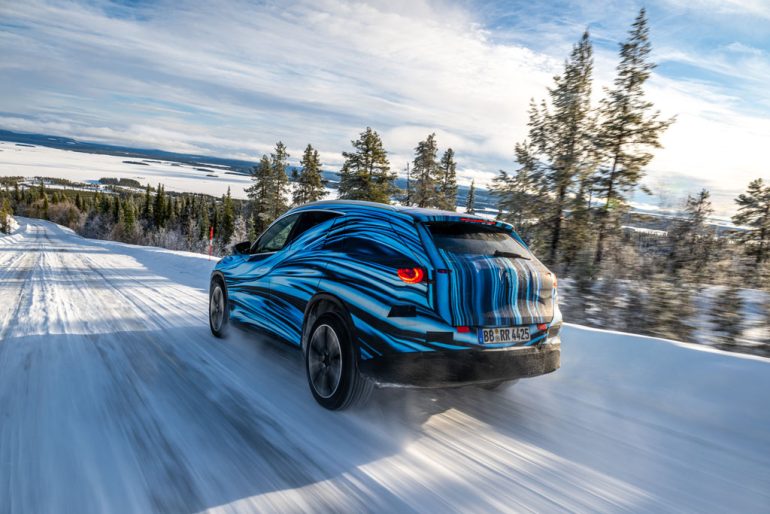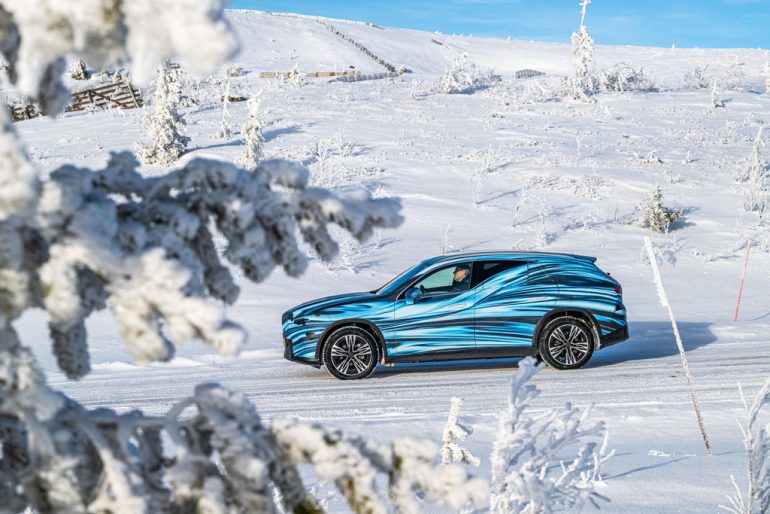
For years, electric vehicles (EVs) have carried an unfortunate reputation for struggling in cold climates. Reduced range, sluggish performance, and long charging times have made winter driving a valid concern for many EV owners. But Mercedes-Benz is rewriting that narrative in a big way. After rigorous sub-zero testing in Sweden’s Arctic Circle, the all-new, all-electric Mercedes-Benz GLC with EQ Technology is proving that EVs can not only survive harsh winter conditions — they can thrive.
The GLC has already earned its place as Mercedes-Benz’s most popular SUV, and now, with an all-electric variant on the horizon, the brand is pushing the envelope on what drivers can expect from a premium EV. With its winter testing complete, the electric GLC is showing that cold weather doesn’t have to mean compromised performance or limited range.

To eliminate any doubt about its cold-weather capabilities, Mercedes-Benz took heavily camouflaged prototypes of the electric GLC deep into the heart of Swedish Lapland. In Arjeplog, just south of the Arctic Circle, temperatures regularly plunge below minus 25 degrees Celsius, and snow- and ice-covered roads are the norm. It’s here, on frozen lakes and snow-packed tracks, that Mercedes put its latest EV to the ultimate test.
And the results? Confidence-inspiring.
From seamless traction on icy roads, thanks to its advanced 4MATIC all-wheel drive system, to the impressive resilience of its battery and drive units, the electric GLC made it clear that cold-weather range anxiety could soon be a thing of the past.

One of the biggest hurdles for EVs in frigid temperatures is the impact cold has on battery efficiency and driving range. Mercedes-Benz directly tackled this issue with the electric GLC’s cutting-edge engineering. Featuring an 800-volt architecture and advanced battery chemistry using silicon oxide-blended anodes, the GLC maximizes energy density while keeping weight in check. This not only helps extend driving range but also enhances overall vehicle efficiency — even when the mercury drops.
Mercedes-Benz has also developed a highly efficient air-side heat pump system as standard equipment on the new GLC. Unlike traditional electric heaters, which can drain a battery quickly in freezing conditions, this heat pump uses waste heat from the motors and battery, along with ambient air, to warm the cabin and precondition the battery. The result? More range and a comfortable interior, no matter how cold it gets outside.
And speaking of charging — the GLC’s premier battery option supports sustained DC fast-charging rates of over 320 kW, meaning shorter stops even in the coldest weather, when charging speeds tend to lag.
Cold-weather driving is about more than just range, though. Safety, comfort, and control are non-negotiable, and the electric GLC delivers. Its dual-motor setup features a sophisticated torque distribution system that keeps all four wheels working in harmony on slippery surfaces. Sensors constantly monitor wheel spin and adjust power accordingly, ensuring optimal traction in real time.

Mercedes-Benz has also integrated an innovative braking system designed to enhance both safety and efficiency. By combining regenerative braking with traditional friction braking, the system maximizes energy recovery without sacrificing pedal feel. Whether coming to a stop on dry pavement or black ice, drivers can count on smooth, predictable braking — another key factor in making EVs more viable for winter driving.
Arctic testing has long been a crucial step for Mercedes-Benz before launching any new model, but it’s especially critical for electric vehicles. Unlike their gas-powered counterparts, EVs face unique cold-weather challenges, from maintaining power output during a frozen start to ensuring charging cables remain flexible and usable. Through over 500 individual tests — with more than 100 specifically tailored to electric drivetrains — the GLC has proven its capability to handle winter with ease.
For customers, that means a future where EV ownership doesn’t come with seasonal compromises. The all-electric GLC is helping to shift the conversation around EVs from “Are they practical in the winter?” to “Why would I drive anything else?”

As electric vehicles move from niche to mainstream, overcoming the stigma of poor cold-weather performance is key. Mercedes-Benz is taking that challenge head-on with the electric GLC, showing that top-tier engineering and thoughtful innovation can make all-season EV driving not just possible, but desirable.
With its successful Arctic trial run, the electric GLC is no longer just an exciting addition to the Mercedes lineup — it’s a milestone in the evolution of EVs, proving that the future of electric driving isn’t confined to warm-weather climates.
And if Mercedes-Benz has anything to say about it, winter driving will never look the same again.

Lloyd Tobias is a seasoned automotive journalist and passionate enthusiast with over 15 years of experience immersed in the world of cars. Whether it’s exploring the latest advancements in automotive technology or keeping a close pulse on breaking industry news, Lloyd brings a sharp perspective and a deep appreciation for all things automotive. His writing blends technical insight with real-world enthusiasm, making his contributions both informative and engaging for readers who share his love for the drive. When he’s not behind the keyboard or under the hood, Lloyd enjoys test driving the newest models and staying ahead of the curve in an ever-evolving automotive landscape.